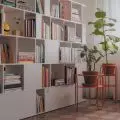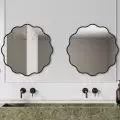Work submitted for the competition
"Best Diploma Architecture"
The theme of this work is the creation of a hotel complex that harmoniously fits into the character of the village, respecting the mountainous terrain, historical heritage, natural environment and the existing urban layout. The project represents an architectural dialogue between the historical character of the village and modern architecture, combining tradition and modernity. The implementation of this project will contribute to the revitalization of the historic building, as well as create new jobs, which will significantly affect the development of the local community.
location
© Anna Szafran
The history of the village dates back to prehistoric times, as indicated by archaeological findings in the area. Over time, it was settled by the Cantans and then by the Romans, who built roads and bridges in the area. In the Middle Ages, Tudanca was an important agricultural and commercial center. During the Reconquista period it was the site of battles between Muslims and Christians. In modern times it came under Spanish rule, and during the Spanish Civil War in the 1930s it was the scene of battles between government troops and opposition forces. Today, Tudanca is a small, charming village that attracts tourists for its historical significance and beautiful scenery. Despite the passage of years, it retains its unique character and traditions.
axonometry
© Anna Szafran
Tudanca is characterized by unique architecture related to traditional way of life and farming. The architecture of the village's buildings uses natural materials, mainly stone and wood. The buildings are low, simple in shape, and the roofs are covered with ceramic tiles. All buildings are located along the main street, which creates a cohesive ensemble of buildings. Decorative elements are characteristic: sculptures on the facades, door and window ornaments, stone walls and traditional "solanas" balconies.
cross sections
© Anna Szafran
The architecture of the village exemplifies harmony between the buildings and the surrounding landscape, functionality and adaptation to the specific needs of the residents. Decorative elements and traditional architectural solutions are an integral part of this regional architecture, and are a valuable monument to the culture and heritage of the Cantabria region.
The village is exposed to the Atlantic maritime climate, which contributes to variable weather conditions. The average annual temperature is around 14°C, and the maximum temperature in the summer months can exceed 25°C.
plans
© Anna Szafran
The entire development includes eight one- and two-story buildings. A surface parking lot for twenty cars is planned in the area covered by the development. The main building, housing the reception area and restaurant, is an adaptation of the existing old pharmacy building and is located on the main street leading to the village. The hotel part includes twenty double rooms, which are arranged in cottages suitably adapted to the mountainous terrain. Two rooms and all common areas are adapted for people with disabilities.
The central part of the complex is the spa area, which includes a garden, swimming pool, locker rooms, massage rooms and a communal cottage with a kitchenette, dining room and living room.
visualization
© Anna Szafran
The entire establishment has been carefully designed in harmony with the existing terrain, taking into account the natural relief and characteristics of the village. Each of the designed buildings is adapted to the terrain, and the hotel does not obstruct the views of the villagers, fitting perfectly into the local architectural style. All existing trees were preserved as part of the work, and the materials used in the project come from the Cantabria region, emphasizing care for the environment and local identity.
Anna SZAFRAN
Illustrations: © Author






































